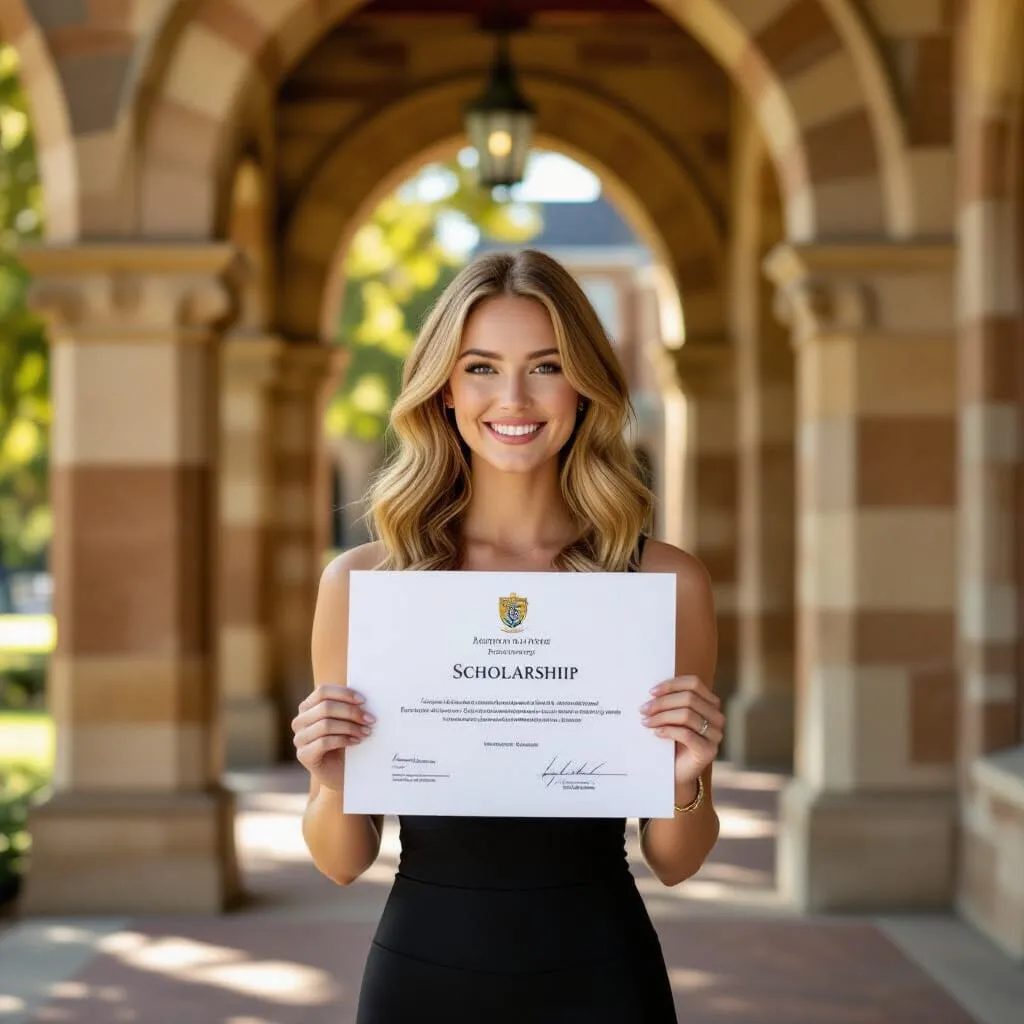20 FAQs About the Country Down Under

Introduction
For the ambitious Indian student, the world is a landscape of opportunity. While many destinations vie for their attention, one continent stands out with its unique blend of world-class education, vibrant city life, and stunning natural beauty: Australia. The land of sunshine, innovation, and a famously laid-back culture has long been a top-tier choice for students seeking an international degree and a global career.
Its universities are consistently ranked among the best in the world, offering cutting-edge research facilities and a curriculum that is both practical and future-focused. This guide, drawing upon the most frequently asked questions from online communities like Reddit and Quora, is designed to be your definitive resource.
As a consultant who has successfully guided hundreds of students on their journey Down Under, I will walk you through the critical aspects of studying, working, and potentially building a life in Australia, ensuring you are well-prepared to make your Aussie dream a vibrant reality.
20 Common FAQs About Studying, Working, and Immigrating to Australia

1. Why is Australia a top study destination for Indian students?
Australia's appeal for Indian students is a compelling mix of academic prestige, quality of life, and post-study opportunities. The country is home to several of the world's top 100 universities, renowned for their high-quality teaching and research. This academic excellence is complemented by a multicultural, safe, and welcoming society.
A significant draw is the focus on student welfare, with strong support systems and a consumer protection framework (the ESOS Act) specifically designed to protect the rights of international students. Furthermore, the prospect of gaining valuable international work experience through the Temporary Graduate visa after studies, coupled with a high standard of living and beautiful weather, makes Australia a highly attractive package for those looking to invest in their future.
- World-Class Universities: Australia is home to the prestigious "Group of Eight" (Go8) universities, which are leaders in research and consistently rank in the world's top 100.
- The ESOS Framework: The Education Services for Overseas Students (ESOS) Act protects your rights, including providing tuition fee protection through the Tuition Protection Service (TPS), ensuring you get the education you paid for.
- Strong Indian Diaspora: A large and vibrant Indian community means access to cultural events, festivals like Diwali, Indian cuisine, and a strong support network to combat homesickness.
- Focus on Innovation: Australia is a hub for research and innovation, home to organizations like the CSIRO, providing students with opportunities to engage in groundbreaking projects.
- Unbeatable Lifestyle: The emphasis on work-life balance, coupled with stunning beaches, unique wildlife, and a culture of outdoor activities, offers an unparalleled student experience.

2. What are the most popular courses in Australia for Indian students with good career and PR prospects?
Aligning your course selection with Australia's skills-in-demand lists can significantly enhance your career and permanent residency (PR) prospects. The most sought-after fields include:
- IT and Computer Science: With a burgeoning tech scene, specializations like data science, cybersecurity, AI, and software development are in high demand.
- Engineering: Mechanical, Civil, Electrical, and Software engineering graduates are highly sought after for various infrastructure and technology projects.
- Healthcare: Nursing, medicine, physiotherapy, and other allied health professions are consistently on the skilled occupation lists due to Australia's growing healthcare needs.
- Accounting and Finance: Professional accounting and finance degrees remain a steady pathway, with many graduates finding roles in Australia's robust financial sector.
- Education and Teaching: There is a consistent demand for teachers, particularly in regional areas, across early childhood, primary, and secondary education.
- In-demand IT Roles: Specific job titles with high demand include Cloud Engineers, DevOps Specialists, and IT business analysts.
- Specialized Engineering Fields: Beyond the core disciplines, areas like Mining Engineering, Agricultural Engineering, and Renewable Energy Engineering offer excellent prospects.
- Growing Healthcare Sectors: The demand in healthcare extends strongly into Aged Care, Disability Services, and mental health support.
- Professional Year Program (PYP): For Accounting graduates, completing a PYP is almost essential as it provides industry experience and valuable points for permanent residency.
- Teaching Specializations: The need for teachers is particularly acute in STEM subjects (Science, Technology, Engineering, and Maths) and for special needs education.

3. What are the academic and English language requirements for Australian universities?
Entry requirements vary between universities and the level of study. However, general guidelines for Indian students are as follows:For undergraduate programs, students typically need to have completed their All India Senior School Certificate (CBSE) or Indian School Certificate (ISC) with a good percentage, usually ranging from 65% to 85% or higher for top-tier universities.For postgraduate (Masters) programs, a bachelor's degree from a recognized Indian university is required. The minimum percentage requirement often depends on the section of the Indian university (Section 1, 2, or 3, as classified by Australian institutions), but a score of 60% or higher is a common baseline.English language proficiency is mandatory. The most common tests and typical minimum scores are:
- IELTS Academic: An overall score of 6.5 with no band less than 6.0.
- TOFL iBT: An overall score of 79-93.
- PTE Academic: An overall score of 58-64.
- Competitive Program Requirements: Be aware that high-demand courses like medicine, dentistry, or physiotherapy will have much higher academic entry scores and may require prerequisite subjects.
- Indian University Classification: Australian universities often classify Indian higher education institutions into Sections 1, 2, and 3. A student from a Section 1 university (e.g., IITs, top central universities) may need a lower percentage score than a student from a Section 3 university for the same course.
- English Pathway Programs: If your English score is slightly below the requirement, many universities offer ELICOS (English Language Intensive Courses for Overseas Students) pathway programs to help you meet the condition.
- Postgraduate Research Degrees: Note that Masters by Research or PhD programs often require a higher English score, such as an IELTS 7.0 overall, to handle the demands of academic writing and research.
- Recency of Education: Some institutions may have a "recency of study" clause, meaning if you have a significant gap in your education, you may need to provide justification or undertake a pathway course.

4. What is the application process and what are the key deadlines for Australian universities?
The application process is straightforward and can usually be done online directly through the university's website or via an authorized education agent. Starting your application 6-8 months before your desired intake is highly recommended.The main steps are:
- Research & Shortlisting: Identify universities and courses that fit your career goals and academic profile.
- Document Preparation: Collect all necessary documents, including academic transcripts, English proficiency test scores, Statement of Purpose (SOP), Letters of Recommendation (if required), and a copy of your passport.
- Application Submission: Fill out the online application form and pay the application fee (typically AUD 50 to AUD 120).
- Receive Offer Letter: If successful, you will receive a Letter of Offer. Once you meet all conditions, you will receive an unconditional offer.
- Acceptance & CoE: To accept the offer, you will need to pay the tuition deposit mentioned in the offer letter. The university will then issue a Confirmation of Enrolment (CoE), which is essential for your visa application.
- The Importance of the SOP: Your Statement of Purpose is your chance to stand out. It should clearly articulate your motivations, academic background, and how the course will help you achieve your career goals.
- Conditional vs. Unconditional Offers: A conditional offer means you still need to meet certain requirements (e.g., final exam results, English score). An unconditional offer means you have met all academic and language requirements.
- The Crucial CoE: The Confirmation of Enrolment (CoE) is the official document issued by the university that confirms you have accepted your place and paid your deposit. You cannot apply for your student visa without it.
- Create a Timeline: Factor in potential delays. Obtaining official transcripts from Indian universities can sometimes take several weeks, so start the process early.
- Using an Education Agent: A reputable, registered education agent can provide valuable guidance, help you prepare your documents correctly, and streamline the application process, minimizing the chance of errors.

5. What are the main intakes in Australia, and which is better?
Australian universities primarily have two major intakes:
- Semester 1 (Primary Intake): Begins in late February or early March. This is the main and most popular intake, offering the widest variety of courses and scholarships.
- Semester 2 (Secondary Intake): Begins in July. This is also a significant intake, offering many, but not all, of the courses available in Semester 1.
Some universities also offer a smaller, third intake in November. For Indian students, the February/March intake is often preferred as it allows more time for preparation after completing school or undergraduate studies in India and has the largest number of course openings.
- Alignment with Indian Calendar: The February intake aligns well with the Indian academic calendar, as most board exams and university results are out by mid-year, allowing ample time for applications and visa processing.
- Advantages of July Intake: The July intake is an excellent option if you need more time to arrange finances, retake an English test, or if you just missed the deadline for the first intake.
- The November Intake: This smaller intake is less common for university degrees and is more often associated with vocational (TAFE) or pathway programs.
- Scholarship Deadlines: Most major academic scholarships have application deadlines that are aligned with the primary February/March intake, making it the more strategic choice for scholarship seekers.
- Academic Year Structure: Starting in Semester 1 means your first long academic break will be the Australian summer (December-February), which is an ideal time for internships or part-time work.

6. What is the total cost of studying and living in Australia for an Indian student?
Australia is considered a premium study destination, and budgeting is crucial.
Tuition Fees:
- Undergraduate Bachelor Degree: AUD 20,000 to AUD 45,000 per year.
- Postgraduate Master's Degree: AUD 22,000 to AUD 50,000 per year.
Living Expenses:
The Australian Department of Home Affairs has a financial requirement for student visa applicants, which is currently set at AUD 24,505 per year for a single student's living costs. This covers accommodation, food, transport, utilities, and entertainment. Major cities like Sydney and Melbourne are more expensive than cities like Adelaide, Perth, or Brisbane.
- Living Cost Breakdown: This annual figure can be broken down into key expenses: accommodation (rent), groceries, public transport, mobile/internet bills, and personal expenses.
- Health Insurance (OSHC) Cost: On top of living costs, you must budget for Overseas Student Health Cover (OSHC), which can range from AUD 450 to AUD 600 per year for a single person.
- City-wise Budgeting: A student might need a weekly budget of AUD 500-600 in Sydney, whereas in a smaller city like Adelaide, it could be closer to AUD 400-450 for the same lifestyle.
- Initial One-Off Costs: Remember to budget for initial setup costs, which include your flight to Australia, the visa application fee, and temporary accommodation for the first week or two.
- Proof of Funds for Visa: For your visa, you must show evidence of having access to funds for your first year of tuition fees, one year of living expenses (AUD 24,505), and your travel costs to and from Australia.

7. Are there scholarships available for Indian students in Australia?
Yes, numerous scholarships are available to help Indian students manage costs. These are offered by the Australian government, educational institutions, and other organizations.
- Australia Awards: Prestigious, government-funded scholarships for postgraduate students covering full tuition, travel, and living expenses.
- Destination Australia Program: Government-funded scholarships to encourage students to study in regional Australia.
- University-specific Scholarships: Most Australian universities offer a range of scholarships for international students based on academic merit, which may provide a 15% to 50% reduction in tuition fees.
- Provider Scholarships: Private colleges and TAFE institutions also offer their own scholarships and bursaries.
- Understanding Scholarship Value: The vast majority of university scholarships are partial, typically offering a 15%, 25%, or 50% reduction in tuition fees. Full scholarships are extremely rare and highly competitive.
- Check University Websites: The most reliable source of information is the scholarships page on each university's website. Check for eligibility criteria, application process, and deadlines.
- Course and Region-Specific Awards: Look for scholarships targeted at your specific field of study (e.g., STEM, business) or for students choosing to study at a regional campus.
- External Scholarship Bodies: Research scholarships from external organizations, such as the Tata Trusts or the KC Mahindra Education Trust, which support Indian students studying abroad.
- Application Process: Some scholarships are automatically awarded based on your academic merit during the admission process, while others require a separate application with essays or interviews.

8. What is the Australian student visa (Subclass 500) application process?
After receiving your Confirmation of Enrolment (CoE), you can apply for the Subclass 500 student visa online via the Department of Home Affairs ImmiAccount portal.Key requirements include:
- A valid passport
- Confirmation of Enrolment (CoE)
- Proof of sufficient funds to cover tuition, travel, and living costs
- Evidence of Overseas Student Health Cover (OSHC) for the duration of your stay
- Genuine Temporary Entrant (GTE) statement
- English language proficiency test results
- Academic and work experience documents
- Health examination results
- Using the ImmiAccount Portal: You must first create an ImmiAccount on the Department of Home Affairs website. This portal is where you will lodge your application, upload documents, and receive all communications.
- Acceptable Financial Documents: Evidence of funds can include bank statements (from yourself or your parents), education loan approval letters from a recognized financial institution, or proof of scholarships.
- OSHC Purchase: You must purchase your OSHC policy before you can lodge your visa application, as you will need to provide the policy number in your application.
- Biometrics Collection: After lodging your application, you will be required to visit a designated VFS Global centre in India to provide your biometric data (fingerprints and a digital photograph).
- Declaring Visa History: It is critical to be honest about your immigration history. You must declare any previous visa refusals from Australia or any other country. Failure to do so can result in a visa refusal and a potential ban.

9. What is the Genuine Temporary Entrant (GTE) requirement?
The Genuine Temporary Entrant (GTE) is a crucial integrity measure for the student visa program. You must provide a personal statement and supporting evidence to demonstrate that you have a genuine intention to stay in Australia temporarily for the purpose of study. Your statement should cover your reasons for choosing Australia and your specific course, your personal circumstances in India (economic, family ties), and how the course is relevant to your future career plans back home or elsewhere.
- Structure Your GTE Statement: A good GTE statement should logically explain: your reasons for not studying in India, why you chose Australia, your choice of university and course, your future career plans, and your strong ties to your home country.
- Demonstrate Ties to India: Provide evidence of financial and family ties. This can include property ownership documents, evidence of family members remaining in India, and a job offer letter for when you return.
- Focus on 'Temporary' Intent: Your entire statement must convince the visa officer that your primary purpose is to study temporarily and then leave Australia. Avoid mentioning immigration or permanent residency as a goal.
- Show Your Research: Include details about your research into the course and how it will lead to specific, high-value career opportunities in India upon your return.
- Avoid Generic Statements: A GTE statement that is copied or sounds generic is a major red flag for visa officers. It must be personal, detailed, and genuine.

10. How long does the student visa process take for Australia?
Visa processing times can fluctuate based on the volume of applications and the completeness of your submission. Generally, it is advisable to lodge your application at least 6-8 weeks before your course commencement date. According to the Department of Home Affairs website, processing times can range from a few weeks to a few months. Ensuring you have submitted all required documents correctly and have completed your medical and biometric appointments promptly can help avoid delays.
- Check Global Processing Times: The Department of Home Affairs website publishes global visa processing times, which are updated regularly. This gives you an indication of the current average wait times.
- Complexity of Application: Applications that are straightforward and complete are processed faster. If you have a complex immigration history or incomplete documentation, expect a longer processing time.
- Lodge a 'Decision-Ready' Application: The best way to ensure faster processing is to submit a complete and "decision-ready" application, where all required documents are uploaded correctly at the time of lodgement.
- Do Not Finalize Travel Plans: You are strongly advised not to book non-refundable flights or pay for final accommodation until you have received the official visa grant notification.
- Peak Season Delays: Be aware that processing times can increase significantly during peak periods just before the February and July intakes. Apply as early as possible.

11. Can I work part-time while studying in Australia?
Yes, the Australian student visa allows you to work. As of recent policy changes, international students can work up to 48 hours per fortnight (a 14-day period) during their academic sessions. During official course breaks, you are permitted to work unlimited hours. This allows students to gain valuable work experience and supplement their living expenses.
- Strict Adherence to the Limit: The 48-hour per fortnight limit is strictly enforced. Working even one hour over this limit is a breach of your visa conditions and can lead to visa cancellation.
- Understanding a "Fortnight": The Department of Home Affairs defines a fortnight as a 14-day period starting on a Monday. You need to track your hours within this rolling period.
- Tax File Number (TFN): Before you can start working and get paid, you must apply for a Tax File Number (TFN) from the Australian Taxation Office (ATO).
- Work Integrated Learning: Any work that is a formal, registered part of your course (like a mandatory internship or clinical placement) is not counted towards the 48-hour limit.
- Financial Planning: While part-time work is a great way to cover your daily living expenses, you should not rely on it to pay your university tuition fees.

12. What kind of part-time jobs are available and what is the average wage?
Students find part-time work in various sectors. The most common areas are:
- Hospitality: Cafes, bars, and restaurants.
- Retail: Supermarkets, department stores, and boutiques.
- Services: Roles in administration, customer service, and delivery services.
- Tutoring: Assisting other students in subjects you excel in.
The national minimum wage in Australia is quite high. As of 2024-2025, the minimum wage is over AUD 23 per hour, ensuring students can earn a decent income from their part-time work.
- Variable Pay Rates: Casual jobs in hospitality and retail will typically pay around the minimum wage, while roles like academic tutoring or specialized support work can pay significantly more.
- Superannuation: For eligible employees, employers are legally required to pay a percentage of your earnings into a superannuation (pension) fund, which you may be able to claim when you leave Australia.
- Job Search Platforms: Popular websites for finding part-time work include Seek, Indeed, and LinkedIn. Your university's career hub is also an excellent resource.
- Australian-Style Resume: Your resume should be tailored to Australian standards – typically 1-2 pages, with a focus on skills and achievements, and without a photograph or personal details like age.
- On-Campus Opportunities: Jobs on campus, such as working in the library, as a research assistant, or as a student ambassador, are highly sought after due to their convenience.

13. What is the Temporary Graduate visa (Subclass 485) or Post-Study Work Stream?
The Temporary Graduate visa (Subclass 485) allows eligible international students to live, study, and work in Australia temporarily after they have finished their studies. The "Post-Study Work Stream" of this visa is for students who have completed a Bachelor, Masters, or PhD degree. The duration of this visa is typically:
- 2 to 4 years for Bachelor's and Master's degrees.
- Up to 6 years for PhD graduates.
This visa is an excellent opportunity to gain professional work experience in your field, which is highly beneficial for a future permanent residency application.
- Two Visa Streams: The Subclass 485 visa has two main streams: the Post-Study Work stream (for university graduates) and the Graduate Work stream (for those with qualifications in specific in-demand occupations).
- The Australian Study Requirement: To be eligible, you must have completed a CRICOS-registered course that took at least two academic years (92 weeks) to complete while you were physically in Australia.
- English Language Requirement: You will need to prove your English proficiency again for this visa, typically with a minimum score of IELTS 6.5 overall.
- Application Deadline: You must apply for the 485 visa within six months of your official course completion date. This is a very strict deadline.
- Open Work Rights: This visa provides you with full, unrestricted work rights, meaning you can work for any employer in any job, which is crucial for gaining relevant professional experience.

14. What are the pathways to Permanent Residency (PR) for graduates in Australia?
Gaining PR in Australia after studies is a goal for many, and several pathways exist, primarily through the skilled migration program.
- Skilled Independent Visa (Subclass 189): A points-tested visa for skilled workers who are not sponsored by an employer or state/territory.
- Skilled Nominated Visa (Subclass 190): A points-tested visa that requires a nomination from an Australian state or territory government.
- Skilled Work Regional (Provisional) Visa (Subclass 491): Requires nomination by a state/territory or sponsorship by an eligible family member to live and work in a designated regional area. This visa provides a pathway to PR after 3 years.
Gaining relevant skilled work experience on the Temporary Graduate visa (485) is a key step in improving your points and eligibility for these PR pathways.
- The Points System: The General Skilled Migration program is points-tested. You score points for factors like your age, English language ability, qualifications, Australian and overseas work experience, and study in a regional area.
- Skills Assessment: Before you can apply for a skilled visa, you must get a positive skills assessment from a designated assessing authority for your nominated occupation. This confirms your skills meet Australian standards.
- State Nomination: The Subclass 190 and 491 visas rely on state nomination. Each state has its own list of in-demand occupations and specific requirements, which can be different from the national list.
- Professional Year Program (PYP): Completing a PYP in Accounting, IT, or Engineering after your degree can provide five extra points towards your PR application and valuable local work experience.
- Dynamic Immigration Landscape: Australian immigration laws and skilled occupation lists can change frequently. It is essential to always refer to the official Department of Home Affairs website for the most current information.

15. What are some common challenges Indian students face in Australia?
While Australia is a fantastic country, students can face some initial hurdles:
- High Cost of Living: Particularly accommodation costs in major cities like Sydney and Melbourne can be a shock.
- Cultural Adjustment: Adapting to the local culture, slang, and social norms takes time.
- Finding Accommodation: The rental market can be competitive, and it's important to be wary of scams.
- Competition for Jobs: While part-time jobs are available, finding a professional role related to your field can be competitive.
- Homesickness: Being thousands of miles away from family is a significant emotional challenge for many.
- Rental Bonds: When renting privately, you are typically required to pay a bond (security deposit) upfront, which is usually equivalent to four weeks' rent.
- Communication Style: Australian culture values directness and punctuality. Understanding this can help in both social and professional interactions.
- Accommodation Scams: Be very cautious of rental scams asking for deposits for properties you haven't inspected in person. Use university housing services for initial guidance.
- The Importance of Networking: To secure professional jobs, networking is key. Attend industry events and career fairs, and consider volunteering to build local contacts and experience.
- Building a Support System: Actively combat homesickness by joining university clubs, Indian student associations, and attending on-campus events to build a new network of friends.

16. What are the accommodation options for students?Students have several choices for accommodation:
- University-managed Accommodation: Includes residential colleges or apartments on or near campus. This is a convenient but often more expensive option.
- Purpose-Built Student Accommodation (PBSA): Private companies offer apartment-style living for students, with excellent facilities.
- Private Rentals: Sharing a house or apartment with other students is the most common and often most affordable option. Websites like Flatmates.com.au and Realestate.com.au are popular for finding rentals.
- Homestay: Living with an Australian family, which includes a room and meals. This is a great way to immerse yourself in the local culture.
- Challenges with Private Rentals: For new students, securing a private rental can be difficult as you won't have a rental history or proof of local income.
- Benefits of PBSA: Providers like Scape, Iglu, and UniLodge offer contracts tailored to students, with all bills (internet, electricity, water) often included in the rent, making budgeting easier.
- First-Year on Campus: Living in university housing for your first year is highly recommended as it provides a secure environment and makes it easy to make friends and integrate into university life.
- Homestay Suitability: Homestay arrangements are often best for younger undergraduate students, as they provide a supportive and supervised family environment.
- Rental Agreements: Never pay a deposit or bond without signing a formal tenancy agreement and receiving a receipt. Be sure to read the agreement carefully.

17. How is the student life and work-life balance in Australia?
Australia is famous for its balanced lifestyle, and this extends to student life. Universities have vibrant campuses with numerous clubs, sports teams, and societies. The beautiful climate and scenery encourage an active, outdoor lifestyle. The limit on part-time work hours ensures that students can focus on their studies while still earning an income, promoting a healthy balance between academic, work, and social commitments.
- Orientation Week (O-Week): This is a week of events before Semester 1 begins. It's the perfect time to explore the campus, join clubs, and make new friends.
- Diverse Student Clubs: You can find a club for almost any interest, from coding and debating to surfing, hiking, and cultural associations like the Indian Students' Society.
- Practical Learning Approach: The Australian education system emphasizes critical thinking, problem-solving, and practical application over rote memorization.
- Multicultural Campus Life: Campuses are a melting pot of cultures. You will regularly find multicultural food festivals and events celebrating the diversity of the student body.
- Comprehensive Student Services: Universities offer excellent support services, including academic skills workshops, free mental health counseling, careers advice, and legal aid.

18. Is healthcare covered for international students?
It is a mandatory visa condition for all international students to have Overseas Student Health Cover (OSHC) for the entire duration of their stay. OSHC provides medical and hospital insurance and helps cover the costs of doctor visits, ambulance services, and hospital stays. It ensures that students have access to necessary healthcare without facing significant financial hardship.
- Approved OSHC Providers: You must purchase your policy from a government-approved provider, such as Bupa, Medibank, Allianz Care, nib, or ahm.
- Coverage Limitations: Standard OSHC covers doctor (GP) visits, some hospital costs, ambulance, and some pharmaceuticals. It typically does not cover dental, optical, or physiotherapy, which require purchasing separate "extras" cover.
- Understanding "Gap" Payments: Doctors in Australia can charge more than the standard fee covered by insurance. The difference, which you must pay yourself, is known as the "gap payment."
- Continuous Cover: Your OSHC policy must cover you from the day you arrive in Australia until your student visa expires. Any gap in cover is a breach of your visa conditions.
- On-Campus Medical Centres: Most large universities have an on-campus health service or medical centre, making it very convenient for students to see a doctor.

19. Should I choose a major city like Sydney/Melbourne or a regional area?
The choice depends on your priorities.
- Major Cities (Sydney, Melbourne, Brisbane): Offer the most job opportunities, vibrant social scenes, and a wide range of entertainment options. However, they also have a much higher cost of living and more competition for jobs and accommodation.
- Regional Areas (Adelaide, Perth, Gold Coast, etc.): Offer a more relaxed lifestyle, lower cost of living, and a close-knit community feel. Importantly, studying in a designated regional area can provide extra points for skilled migration visas and may offer access to a wider range of occupations for state nomination, significantly boosting PR prospects.
- PR Points Advantage: Studying and living in a designated regional area for at least two years can make you eligible for an extra 5 points on the skilled migration points test.
- Regional Occupation Lists: State governments in regional areas often have their own skilled occupation lists with a wider range of eligible professions compared to high-population states.
- Lifestyle Difference: Contrast the fast-paced, anonymous nature of a large city with the community-focused, slower, and often more nature-centric lifestyle of a regional city.
- Cost of Living Example: The weekly rent for a single room in a shared apartment in central Sydney might be AUD 350-400, while a similar room in Adelaide could be AUD 200-250.
- Defining "Regional": Be aware that "regional Australia" for immigration purposes includes most of the country except Sydney, Melbourne, and Brisbane. This includes major, modern cities like Perth, Adelaide, the Gold Coast, Canberra, and Hobart.

20. How safe is Australia for Indian students?
Australia is generally a very safe and tolerant country with a low crime rate. Universities and communities have strong support services in place for international students. Like any country, it is important to be aware of your surroundings and take standard safety precautions. The vast majority of Indian students have a positive and safe experience throughout their studies in Australia.
- University Support Services: Every university has a dedicated International Student Support team that can provide advice and assistance on a wide range of issues, including safety.
- Campus Security: University campuses are well-lit and monitored by security services. Many offer a 24/7 security escort service to walk students to their cars or nearby public transport at night.
- Know Your Rights: It's important to be aware of your rights as a tenant in your accommodation and as an employee at your workplace to prevent any form of exploitation.
- General Safety Precautions: Take standard precautions like being aware of your surroundings, especially at night, using official public transport or reputable ride-sharing services, and not leaving valuables unattended.
- Beach Safety: A unique aspect of Australian safety is beach safety. Always swim at patrolled beaches between the red and yellow flags, which mark the safest area to swim.
Conclusion

Embarking on an educational journey in Australia is more than just an academic pursuit; it's an investment in a global future and an enriching life experience. From its sun-kissed beaches to its bustling, innovative cities, Australia offers a dynamic backdrop for learning, growth, and discovery. While the process requires careful planning and dedication, the rewards are immeasurable. The skills you acquire, the friendships you forge, and the professional experience you gain will prepare you for a successful career anywhere in the world. As you take your first steps towards this exciting adventure, remember that this journey is about embracing new perspectives and challenging yourself to grow. With the right preparation and a spirit of exploration, you are poised to not only achieve your academic goals but also to thrive in the vibrant Australian life.


